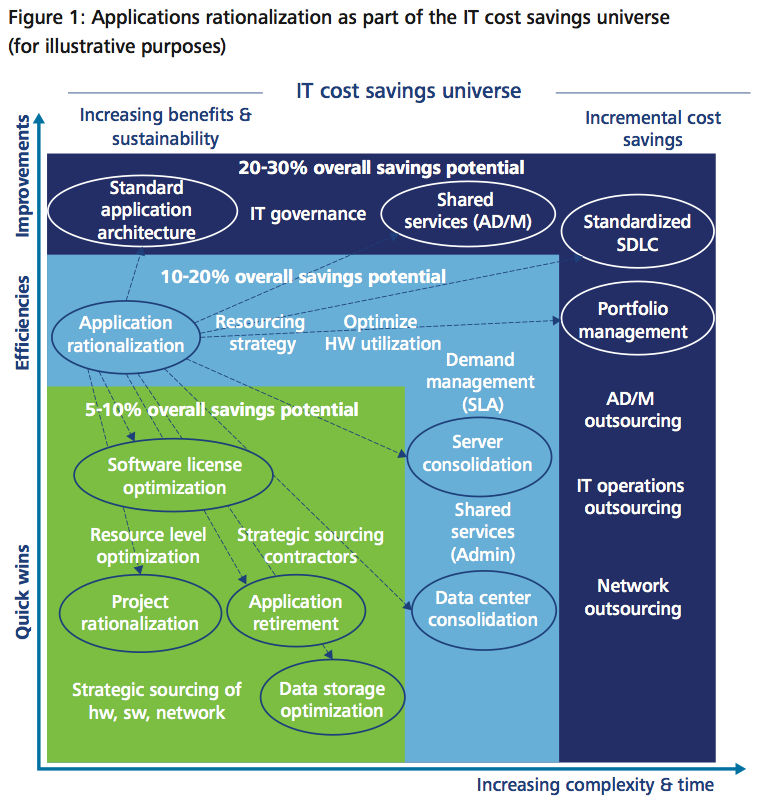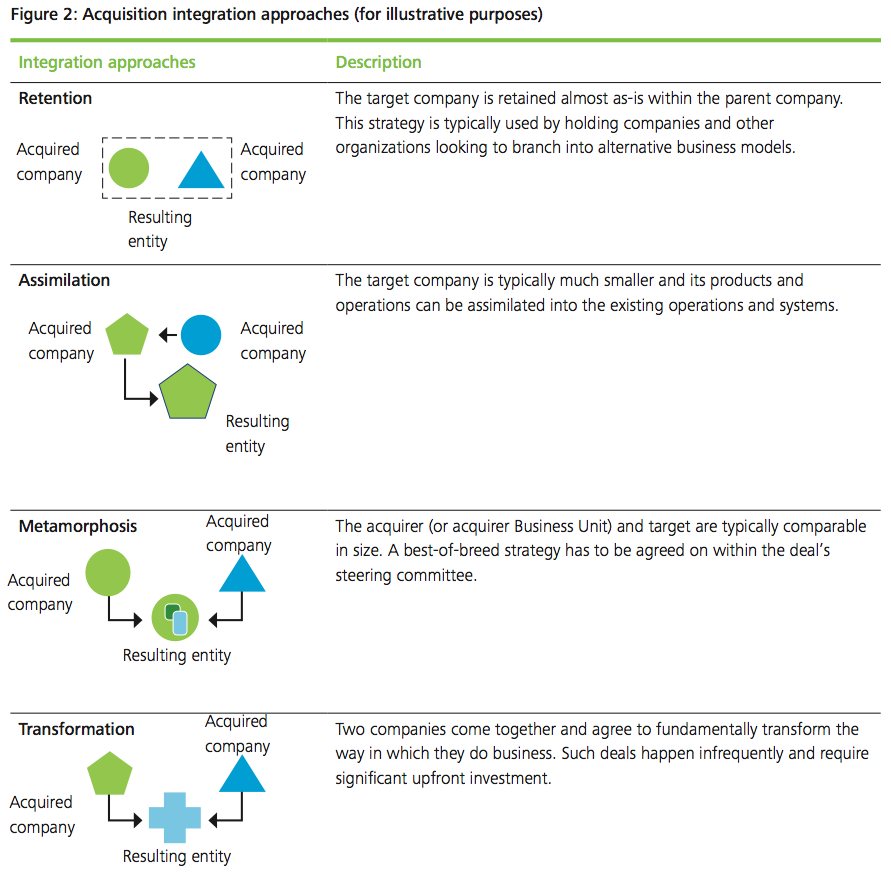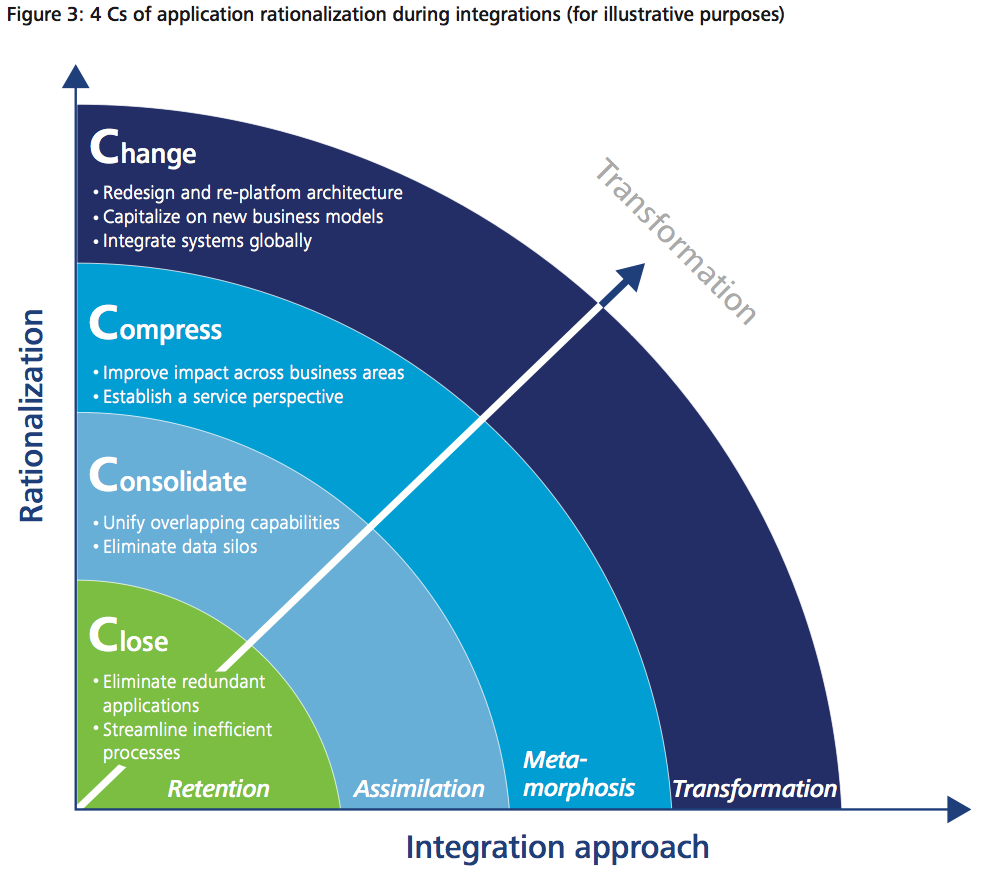
Publications Applications Rationalization During M&A: Standardize, Streamline, Simplify
- Publications
Applications Rationalization During M&A: Standardize, Streamline, Simplify

Most companies tend to accumulate a large information technology (IT) application portfolio over time, especially if they grow through M&A and do not fully integrate operations and assets after each transaction. When viewed holistically, many of these applications may not align with the company’s overall M&A strategy; they were created as point-in-time solutions and don’t necessarily support post-deal, enterprise-level, business and organizational objectives. Similarly, in a divestiture context, often once the transaction closes, both SpinCo and RemainCo1 may need to review their applications portfolios and rationalize to support the “revised” businesses.
An M&A event, therefore, is an ideal time for companies to examine their applications portfolio and explore opportunities to:
- Attain operational and cost synergies via acquisitions and integrations
- Reduce stranded costs left with the seller after a divestiture
- Standardize, streamline, and simplify their portfolio to best serve the future company and its lines of business
A proactive application rationalization program can help M&A participants—both sellers and buyers—achieve one or more of the above objectives by simplifying their portfolio and the associated infrastructure (systems and personnel) required to support it. By engaging in application rationalization, organizations can reduce costs (see figure 1), operate more efficiently, and focus on what really matters during the M&A process—legal and regulatory issues, systems and process integration, and business continuity.
This article explores some leading practices to improve the success of an M&A-driven application rationalization program.

Align rationalization with overall M&A strategy
IT executives should work closely with their business function counterparts to align an application rationalization program with the company’s overall M&A strategy, as well as the selected integration approach (for an acquisition) or separation approach (for a divestiture).
During an acquisition, the purchasing and target companies must assess and integrate applications existing in each other’s portfolios. Companies typically adopt one of four integration approaches, depending on the deal rationale and synergy targets (see figure 2).
In a divestiture context, the concept behind the 4 C’s also applies (see figure 3). A surfeit of applications may create a need to rationalize. The company being carved-out (SpinCo) often starts its new life with a bloated portfolio consisting of the existing applications used solely by the SpinCo and the applications it shared with the ParentCo (e.g., HR and ERP). The ParentCo, meanwhile, is frequently left with stranded costs for applications it shed along with the SpinCo. Based on the particular deal strategy, the SpinCo typically chooses one of four application separation approaches—clone & go; clone & vitiate; extract, transform, & load; or copy structure—to increase/enhance the remaining applications’ alignment with the new organization’s enterprise architecture. Once the separation is complete, the ParentCo can consider how to best optimize its remaining portfolio to reduce stranded costs.


Leading practices in portfolio rationalization
Whether a company is engaging in an acquisition, merger, or divestiture, IT executives should consider the following leading practices when developing an application rationalization program. Doing so can help to achieve synergies and reduce costs by standardizing, streamlining, and simplifying the company’s portfolio after an integration or separation.
• Partner across functions and business units. Make systems and applications rationalization a performance metric for the executives in charge of each operational function or business unit. By doing so, they will share accountability for hitting targeted reductions. Cross-organizational partnering works well in IT organizations that may not have a charge-back model for per-application spend. Where such a model does exist, partnering should happen naturally as the cost-saving synergies will be borne by the application costs in the business unit budgets.
• Define the end-state portfolio blueprint. Carefully assess the IT capabilities of the pre- and post-deal companies to identify the applications that will help to achieve post-deal IT synergy goals, keeping in mind the business processes that need to be aligned to maintain continuity. A series of evaluation filters should be applied to determine the future state for an individual application and the total portfolio. Define a scoring model (see figure 4) to identify which applications need to be retained based on business value, functionality, data systems, supportability, and cost. Do not hesitate to move away from custom, internally developed applications to standardized platforms, including Software as a Service (SaaS) or cloud options that align with the overall IT strategy.
• Develop a roadmap. Based on the analysis and the scoring model, develop a sequenced roadmap with interim objectives and target dates, taking into account influencing factors such as tax strategy, operations strategy, and market integration. Identify early adopters and low-hanging targets that can help realize the synergies with immediate results. There may be business-as-usual (BAU) project dependencies that can influence timing for the rationalization of certain applications (primarily, regulatory needs like submissions, timing of quarterly close, year-end). It is important to develop this sequenced roadmap and get it approved by IT and business stakeholders well before execution.
• Focus on the ERP landscape. In most companies, the ERP system is the core platform that supports the bulk of enterprise operations. Thus, a post-merger integration plan should focus first and foremost on integrating the acquisition’s ERP system. (Based on Deloitte’s experience supporting thousands of deals, approximately 80 percent of IT M&A costs will be incurred for this aspect of the IT integration.) Other applications can be placed on a parallel integration track, taking into account the necessary upstream and downstream dependencies.
• Establish a PMO and governance model. Establish a strong program management office (PMO) to oversee application rationalization efforts and support alignment with business objectives, capabilities, expectations, and outcomes. Secure executive- and business-level sponsorship along with appropriate department- and functional-level participation and accountability to achieve rationalization goals. The PMO plays a vital role in institutionalizing the required level of rigor and consistency for program planning, execution, tracking and reporting, and managing cross-functional dependencies.
The PMO’s role likely will expand considerably during the deal’s execution phase to encompass program design and control, business case and communications, financial control and tracking to metrics, risk awareness and contingency planning, and read-out and reporting to the steering committee.
• Execute and track cost savings. A reduction in overall IT operational costs often pays for a significant portion of an application rationalization program. Companies should baseline each application’s total cost of ownership to track the savings; this includes the original capital investment as well as maintenance and support fees, internal personnel costs (fully loaded), and infrastructure costs. On the program execution side, work with the leadership team and business stakeholders to define the program metrics that need to be tracked, including synergies that are realized as part of the rationalization process. Identify and agree on the tracking approach and reporting mechanisms for the program. Note that application retirements may lead to contract terminations, support consolidation, and asset reduction. Having clear-cut, planned monthly/quarterly targets for synergy realization and tracking them against the actual dispositions on a periodic basis will help to identify any leading or lagging indicators that contribute to the program execution.
• Protect intellectual property and exposure. In many M&A scenarios, business, legal, regulatory, and compliance may require that certain data be archived prior to retiring the legacy applications post-rationalization. Most companies try to integrate key processes and, thereby, systems to realize synergies rapidly; they often focus on active data migration to target systems, leaving legacy records in source systems. Careful consideration should be paid to active versus historical data, which is usually determined by lines of business (LOBs) as part of the integration planning. Working closely with records management and legal functions to identify retention requirements usually pays dividends in managing corporate risk and exposure.

Wrapping it up
An M&A-driven application rationalization program offers benefits to both buyer and seller. In an acquisition, rationalization may help to streamline a company’s newly expanded software portfolio and limit/reduce redundant processes and technologies to assist in achieving M&A-related synergy goals. In a divestiture, application rationalization may help a seller avoid stranded costs and align the remaining applications with the spun-off organization’s new enterprise architecture.


Stay up to date with M&A news!
Subscribe to our newsletter


